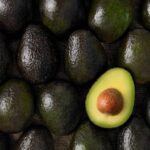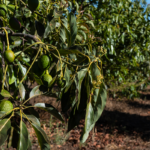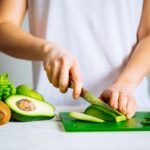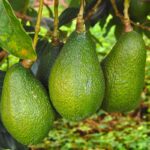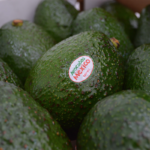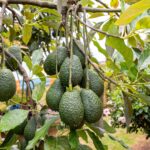Chilean avocado and its projection

At the 2024 Global Avocado Summit, an event organized by the Chilean Avocado Committee and Yentzen Group, Chile's avocado market was analyzed by Bagno's commercial manager, Gabriel Alarcón, who has more than 30 years of experience in the industry, with important milestones in the Chilean industry such as the incorporation of ripe avocado and the sales format in nets, and, lately, developing the presentation of avocado in guacamole.
Alarcón began his presentation by asking the attendees why Chileans consume so much avocado. He answered, "Avocado has always been present in our lives and is an important part of it.”
He recalled that in 1973, most of the varieties were black of Mexican origin and less than 10% of the avocado was Hass, “so the supremacy of Hass led to the replanting of this variety.”
Alarcón pointed out that in the '90s, the amount of Hass avocado that remained in the domestic market was very little, and most of it was exported. “In Chile, only the discards and the small avocado remained, which was highly valued and people adopted it quickly.”
He explained that Hass avocado began to take center stage, with a peak in 2009-2010, when it reached 300,000 tons of production. Currently, the country is in the order of 200,000 tons of Hass avocado.
Chilean avocado imports
Bagno's commercial manager presented an analysis of exports. “Practically all the avocado produced in Chile was for export and there was little volume left for the domestic market; which was a challenge, it was also an opportunity.”
In this sense, he said that he began to “look for a market where avocado could be imported to Chile when there was no avocado left in the market. And in the year 2000 to 2001, I made the first avocado import from Argentina; avocado with methyl bromide, it was a disaster.”
Then he tried with avocado from Peru, “but in those years the avocado also had to come with cold treatment and 30% had to be thrown away before ripening and the other 70% when the fruit ripened.”
He added that it was not until 2004 that avocado imports from Mexico were authorized. “The problem was that Mexican avocado, being a very good avocado, does not travel well. We even brought avocado from the United States, from California, where they have a very good avocado, but very expensive for the Chilean market.”
Chile and avocado consumption
Analyzing the per capita consumption of Hass avocado, he said that until 2000 it was very similar to that of other varieties. “A relevant fact is how between 2021-2023 we will consume more imported avocado than Chilean avocado.”
While in 1973 per capita consumption was 1.3 kilos, today in Chile 9 kilos of avocado are consumed, of which 8.2 corresponds to Hass.
He indicated that the increase in consumption is mainly due to the campaign carried out by the Avocado Committee with Eliseo Salazar and Fernando González, where “people became fond of avocado.”
In his opinion, the Chilean case is atypical due to the quality of avocado and its acceptance in the market, “therefore, we have a tremendous product.”
Based on the 2017 National Institute of Statistics survey, the percentage of households that indicated consuming avocado was 44.2%.
He noted that he requested a survey to have updated data, with a sample of 1,026 cases, which showed that 93% acknowledged having consumed avocado. “The most surprising of all is that they were of all ages and from all socioeconomic levels. In addition, consumption was very similar between men and women. It is a tremendous product, super transversal. Few industries can say I have a product that has a market penetration of 93%.”
Another of the survey results goes in line with 79% of respondents saying they have shopped in the last week and the other 14% between 1 and 2 weeks. “That means that the purchase is highly repetitive. That means there is a whole logistical chain behind, to be positioning the product promptly.”
He explained that 19% of the 93% consume avocado every day or almost every day. “The highest consumption is ground, sliced, and in halves, since avocado is healthy, tasty, and very easy to prepare the product.”
He added that 63% say it is tasty, 61% that it is healthy, and 5% that everyone likes it at home.
Regarding the occasions of consumption, Alarcón indicated that 79% consume avocado at breakfast and lunch, 54% at lunch, 37% at dinner, and 32% as a dip or guacamole.
Future of Chilean avocado
Bagno's commercial manager indicated that the Chilean avocado industry is sustainable, takes care of the environment, and has a good carbon footprint. “The Avocado Committee in recent years has been able to communicate that avocado is a sustainable industry”.
Despite being an industry with unique qualities in the domestic and consumer markets, it is not without its challenges. In this regard, Alarcón said, “The future looks promising, but we have to take care of the industry,y and to take care of it we need the product we are selling to have the quality that consumers expect so that they continue to consume these volumes and even more”.
He added that “we must work on availability, we must be able to bring avocado complying with all phytosanitary requirements but being able to bring an avocado that can satisfy consumption in winter when local production is very scarce”.
Another point that, in his opinion, the industry must strengthen is innovation, “because consumers increasingly want to try new ways of consuming. They want to see new forms of packaging and new ways of producing and transporting.
He concluded by saying that “we have to take care of the market so that it continues to be an important part of the lives of Chileans”.
















